Black Mass and the Battery Revolution: An Overview of Experimental Research Conducted by Alfred H Knight
As the global demand for batteries is projected to significantly increase in the decades to come, Alfred H Knight, a leading global testing and inspection organisation, is participating in the ‘battery revolution’ through innovative experimental research.
As we enter a new era known as the ‘battery revolution’, the number of lithium-ion batteries (LIB) in circulation is likely to increase significantly.
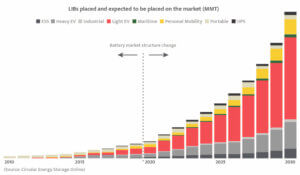
An anticipated shortfall in the availability of battery minerals is predicted by some investigators to result in a greater reliance on the recycling of end-of-life (EoL) LIB.
Experimental research commissioned and conducted by Alfred H Knight and our partners explores the phase characteristics of the commercially important intermediate material, known as ‘black mass.’
WHAT IS BLACK MASS?
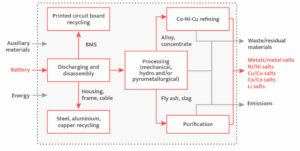
‘Black mass’ is the industry term used to describe a type of e-waste comprising crushed and shredded EoL battery cells. It contains mixtures of valuable metals including; lithium, manganese, cobalt and nickel.
Initially, waste batteries are collected, sorted, discharged and disassembled.
This is followed by mechanical crushing, drying, sorting sieving and pyrolysis to 700°C to remove any remaining electrolyte and potentially hazardous to health fluorine-containing components. The resulting material is what is referred to in the battery recycling industry as ‘black mass’.
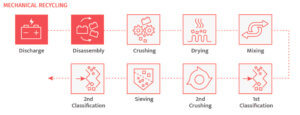
The demand for future battery mineral supply and the associated metals relies on the availability of economically viable geological raw materials. The recycling market for LIBs is expected to expand significantly and black mass could provide strategically important metal resources that could make up part of the shortfall from conventional geological supplies. The shift to a more circular economy creates the framework needed for collecting and recycling LIB into the supply chain.
According to research conducted by Circular Energy Storage, by 2030, it is estimated that around 1.2 million tonnes of LIBs will have reached EoL. This comprises an estimated potential recovery of 125,000 tonnes of lithium, 35,000 tonnes of cobalt and 86,000 tonnes of nickel, which could be recovered for use in new battery production.
PHASE CHARACTERISATION
The results of the assaying performed by Alfred H Knight found a sample of black mass from a European source to comprise; cobalt (15.79%), nickel 6.94%, manganese 4.82%, lithium 3.19%, copper 1.97%, aluminium 5.13% and other components.
Following this, the AHK Technical Department commissioned an innovative and experimental programme of ‘phase characterisation’ to determine the battery components, phase chemistry and morphological characteristics, grain size, composition and textural variability for a natural state (unprepared) and prepared (crushed and dried) powdered sample. This was required to; develop a sampling strategy and standard operating procedure (SOP) to obtain a non-biased and representative sample, assist to determine a hydrometallurgical or pyrometallurgical processing route, detect valuable payable metals, assist with assay procedures, identify potential pollutant or penalty phases and for hazard identification and risk mitigation.
The black mass was investigated using expertise and instruments from the UK, Canada and Finland. This included:
- A visual examination and binocular microscopy.
- Manual scanning electron microscopy (SEM).
- Automated scanning electron microscopy with linked energy dispersive spectrometers (SEM-EDS).
- Advanced mineral identification and characterization systems (AMICS).
- X-ray computed tomography (X-CT).
- Laser ablation inductively-coupled plasma mass spectrometry (LA-ICP-MS).
THE RESULTS
The results of the automated and interactive SEM-EDS quantified the phases present and showed at high resolution, the chemical variability and phases present that could be assigned to original battery components:
- The particles were found to be texturally complex, with mixed phases.
- Aluminium foils were coated with the different lithium metal oxide compounds.
- Copper foil appeared ‘wire-like’ in 2D, however, the X-CT imaging showed complex 3D textures and morphology of the particles, including deformed copper foil sheets.
- The light elements, such as lithium and 67 other non-metals and metals at a 20-micron scale with ppm to ppb level detection limits, were detected and quantified using LA-ICP-MS.
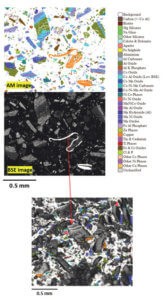
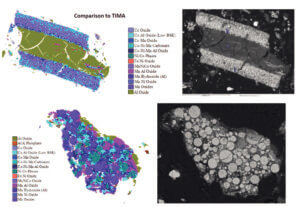
WHY IS THIS IMPORTANT?
The technical research commissioned and conducted by Alfred H Knight provides a detailed understanding of the complex composition, particle structure and textural variability of black mass. This is enabling improved sampling and analysis techniques, which support a full understanding of the metal content. Alfred H Knight is providing a more detailed understanding of black mass, in the recycling industry, to assist with the understanding of industrial processing and the recycling of battery waste.
GET IN TOUCH
Our team of highly-skilled subject matter experts, technical specialists, field inspectors and laboratory technicians operate from strategically located hubs around the globe. This enables Alfred H Knight (AHK) to deliver swift, accurate and reliable results at each stage of the battery materials supply chain.
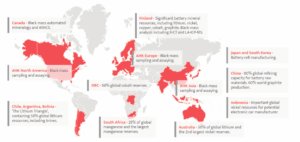
If you would like further information on the research conducted by Dr Laurance Donnelly and the team at Alfred H Knight, or discuss your end-of-life batteries, head to our contact page.
ACKNOWLEDGEMENTS
The author would like to acknowledge the support and contributions from Prof Duncan Pirrie (University of South Wales), Dr Matthew Power (Vidence Inc., Canada), Dr Ian J Corfe, Dr Jukka Kuva, Dr Sari Lukkari, Dr Yann Lahaye, Dr Xuan Liu, Dr Alan Butcher (Geological Survey of Finland, Circular Economy Solutions Unit), IUGS Initiative on Forensic Geology (IFG), AHK Technical Department, AHK Communications and Marketing Department, Mr Patrick Le Mare (AHK Circular Economy Industry Lead), Mr Theodoros Theodorou (formerly, AHK Senior Market Analyst, Circular Economy), Mr Seok Han (AHK battery specialist).
This article was originally featured in the Q2 2022 Rho Motion Magazine. To read the rest of the magazine, request a digital copy here.